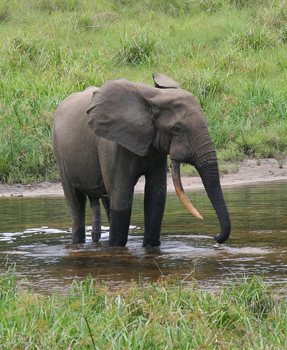Facts About African forest elephant
The African forest elephant is a distinctive species that inhabits the humid forests of West Africa and the Congo Basin. As the smallest of the three elephant species, it is easily recognized by its straight, downward-pointing tusks. These elephants live in closely-knit family groups of up to 20 members and have a diverse diet that includes leaves, seeds, fruit, and tree bark. They play an essential role in maintaining the health of their forest ecosystem.
First scientifically identified in 1900, the African forest elephant has seen its population decline dramatically due to hunting and other threats. Initially considered a subspecies of the African bush elephant, it was later classified as a separate species. Today, they can be found in regions across West and Central Africa, with Gabon hosting the largest stable population.
These elephants are known for their social behavior, traveling long distances daily in search of food and exhibiting complex dietary and habitat preferences. Unfortunately, they face numerous threats such as habitat loss, fragmentation, and poaching for ivory and bushmeat.
Conservation efforts are in place to protect these extraordinary creatures. These include monitoring populations through databases, international trade bans, and protective measures in various countries. Studying the African forest elephant has always been challenging due to the dense forests they inhabit, but new technologies like thermal imaging are helping researchers gain better insights into their lives.
Protecting the African forest elephant is crucial not only for the species' survival but also for the preservation of the forest ecosystems they help sustain. Efforts are ongoing to ensure that these elephants thrive for generations to come.

 Tanzania
Tanzania